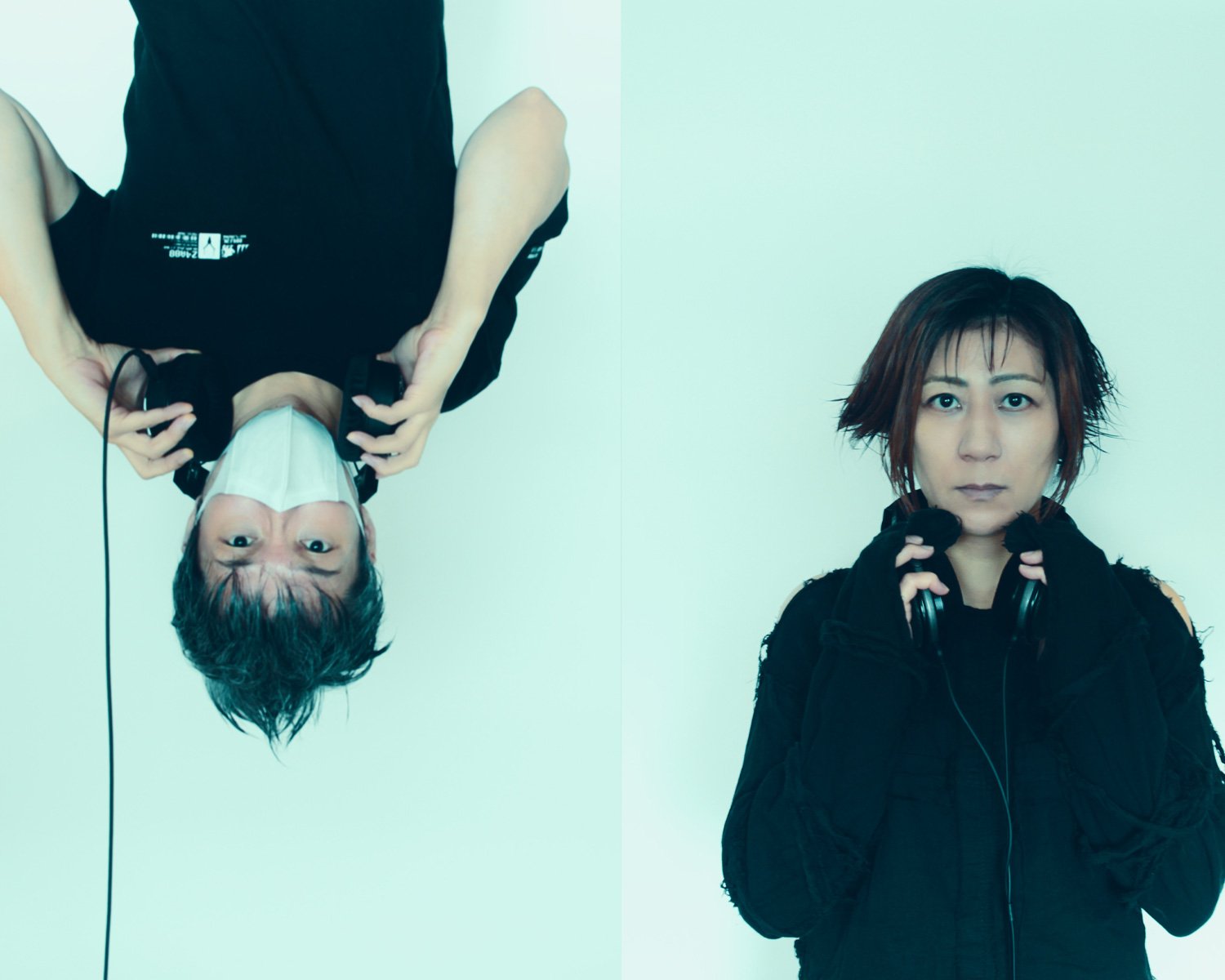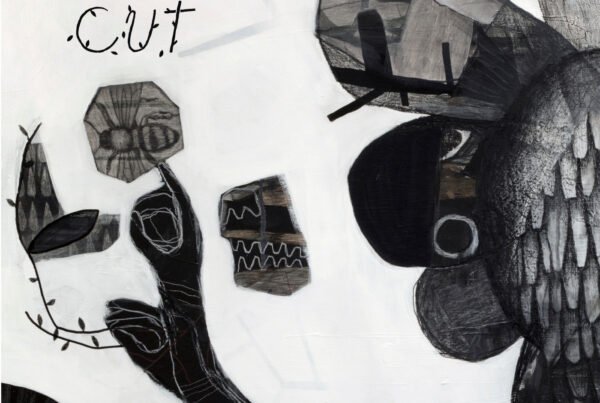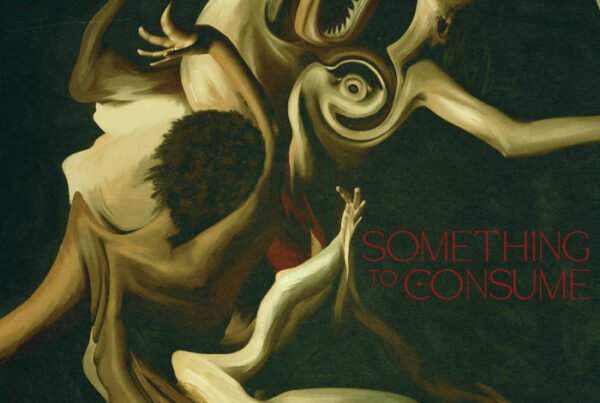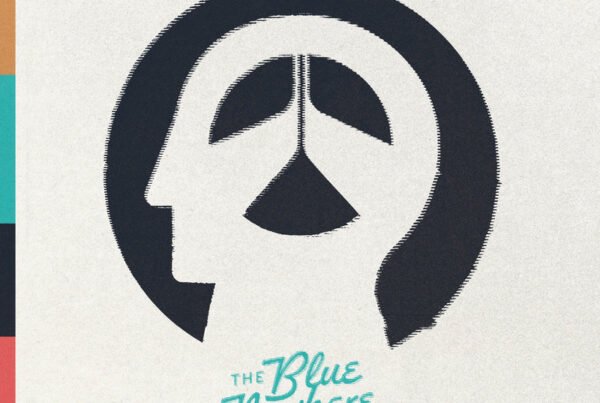Skronk (as a noun) is a raw, discordant sound produced with electric guitars. Not linked to a specific genre but a sensibility of sonic madness around electric guitar noise. It was coined as onomatopoeia by critic Robert Christgau while describing DNA’s 1981 EP A Taste of DNA in which he described its skronkiness as ‘funny as hell and just as gut-wrenching—chaos neither celebrated nor succumbed to, just shaped into, well, postchaos’. 13 years later Melt-Banana released their debut album Speak, Squeak, Creak which was an album of noise-grind maelstrom, 30 years and eight albums later and they’ve made a career of nonsensical skronk music. Their ninth album 3+5 once again finds them as a duo and with no signs of letting a reduced band or time slow down their desire to bright, ear-shattering skronk.
3+5 finds Melt-Banana as a band who have attained legendary status for their unique sound and irrepressible energy, yet we’ve waited 11 years since their last offering Fetch. When describing this new album Olli Siebelt of the BBC states ‘Their aesthetic approach is exultantly experimental, fusing diverse genres imbued with chaotic energy. As on their previous works, the music on 3+5 is unpredictable, always filled with surprises and excitement‘. And so the stage is set for another album of Melt-Banana goodness from a very consistent band, and would you know that’s what we get.
“Code” opens with suitably bright electronic flashes and piercing guitar feedback, quickly giving way to Yasuko Onuki’s impish vocals as usual. Its playful and bright chaos sets the scene and as is like a big hello to the listener after their longest gap between albums. Just over a minute passes before being fully into the swing where its indie rock danceableness is just another welcome sign we’re in for a treat. Thrust into “Puzzle” and it’s as fast and intense as they’ve ever sounded. While it isn’t the short grind bursts of their early work or Bambi’s Dilemma, the more standard song length almost allows it feel heavier and more chaotic. The breakneck speed of the drums and bass are akin to the recent cybergrind trend, allowed without a human rhythm section, and the intensity is relentless throughout.
“Case D” continues the momentum, led by a bright and quick guitar rhythm reminiscent of their friends, tour mates and who they often cover in Discordance Axis. The track does refrain in the middle section before doubling down on the shimmering guitars akin to the legendary Inalienable Dreamless. “Stopgap” is about as electronic as the band have ever sounded too, while the pulsing rhythms are still here without the rhythm the band want to explore the electronic sound in their absence as well. The technical guitar playing of Ichiro Agata is put through pedals to barely even sound like a guitar through much of the track before we hear it layered alongside a Casio-esque keyboard, bringing about memories of the Casiocore era of hardcore evoking bands like Trencher.
“Scar”’s blend of guitars and synths has a similar feeling but with a much more twinkly synth sound taking a melodic lead. The guitars sound like a revving engine powering up underneath the sugary sweet vocals as the synth arpeggio powers the track. In discussing the album, they discussed being influenced by video games, and there is a sense of the 8-bit chiptune style of music but aesthetically “Scar” and 3+5 at large is an album which is constantly the last lap of a Mario Kart Grand Prix where the music notably speeds and pitches upwards.
Another key influence the band noted was the sounds of Tokyo, ‘Tokyo is quite a noisy city if you walk in a busy area like Shibuya or Shinjuku or Akihabara or Harajuku‘. This calls to mind the famous article from the earliest days of popular music, “The Art of Noises” by Luigi Russolo, who stated that ‘to excite our sensibility, music has developed into a search for a more complex polyphony and a greater variety of instrumental tones and coloring’, fast forward another hundred years and the music which has progressed is beyond the imagination of anyone of the time. On “Flipside” we are treated to more trademark chaos that seeks to combine the Bad Brains grind of Teeny Shiny around a discordant foundation. Its chaos soothes in that it is louder and more obnoxious than the surrounding world.
With so many sounds appearing and with the progression of music, Russolo did correctly predict that ‘one day we will be able to distinguish among ten, twenty or thirty thousand different noises’. In 2024 the sheer amount of these noises is beyond belief. Melt-Banana’s production of noise combining so much at once is mind blowing. The last third of the album finds screeching guitars, piercing vocals, and bombastic programmed drums on “Hex”. On “Whisperer” the 8-bit synths are dialled up to 11 to sound like something the a SNES soundtrack while the guitar and vocals are buried in the mix as if flattened for the simplified speaker outputs of an older generation console. Closer “Seeds” isn’t an extended ambient piece as Bambi’s Dilemma or Cell Scape which overall keeps 3+5 a rather succinct affair despite its helter-skelter structure. The tracks synths, guitar, and blasting are nothing new for the album but are a welcome climax in their speed and fun.
There’s a playfulness and childishness to Melt-Banana that has always made them such fun to listen to, they soothe my adult brain with a chaos like Crazy Frog soothed my child brain. Unlike the CGI amphibian though, on 3+5 we’re offered up a technically brilliant set of songs that take notes from a multitude of genres to create a sound all of their own. The sound of Melt-Banana is instantly recognisable, whether it be through the vocals, the chaotic guitars, the racing rhythms or their whole tone. In their skronk, Melt-Banana remain imperious into a fourth decade.






